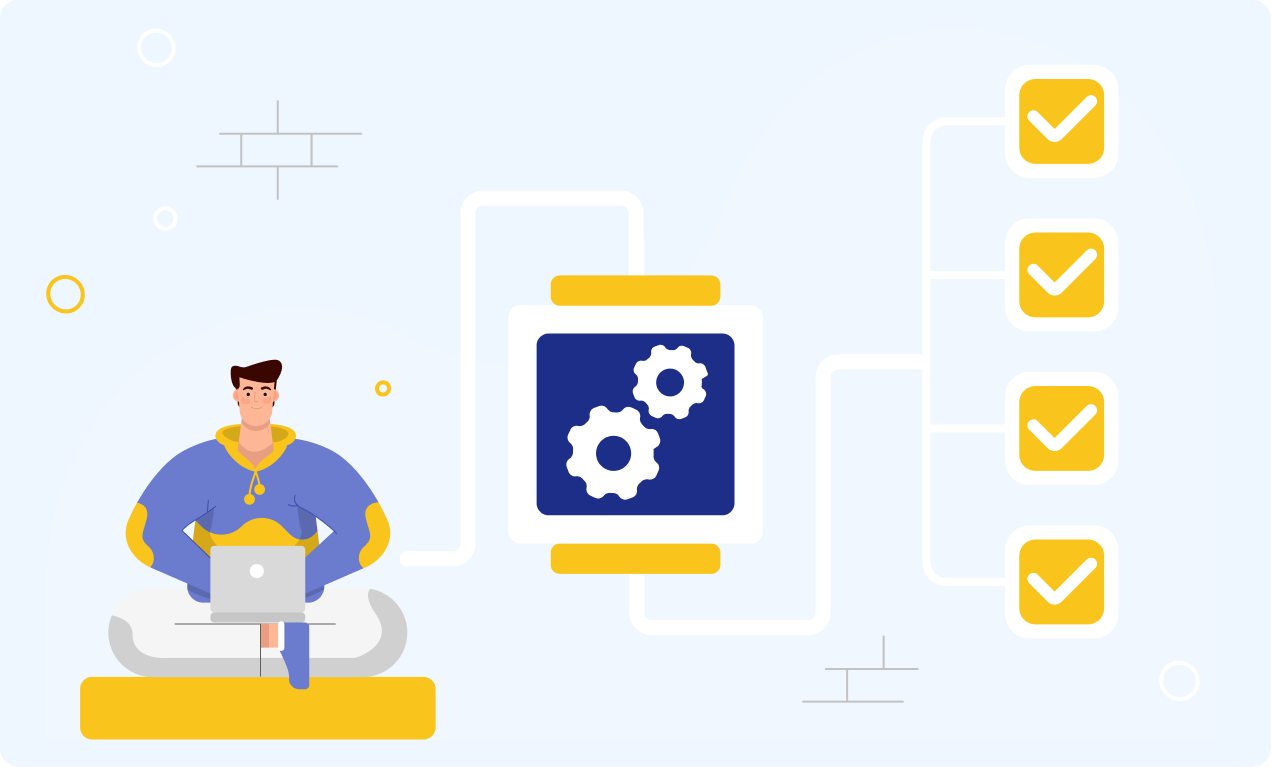Published - 6 months ago | 4 min read
AWS Bedrock in E-commerce: Three Real Use Cases That Move the Needle
Most e-commerce leaders have heard the AI hype. But for teams actually running digital storefronts, what matters is simple: Can these new tools make my catalog richer, my operations leaner, and my margins better, without wrecking my customer experience or breaking my stack?
AWS Bedrock is being used for just that, turning deep learning into real workflows, not just pitch decks. Here’s how teams are actually deploying it.
AWS Bedrock is being used for just that, turning deep learning into real workflows, not just pitch decks. Here’s how teams are actually deploying it.
1. Automating Product Content at Scale—And Keeping It On-Brand
Problem:
You launch 300+ new SKUs a month. Everyone needs unique copy, SEO optimization, localized descriptions, and compliance-checked claims. Manual writing doesn’t scale, and template copy kills search and trust.
How Bedrock Helps:
- SKU-specific content generation: Fine-tune a Titan or Claude model with your product taxonomy, brand tone guides, and compliance rules.
- Automated enrichment: Connect Bedrock to your PIM or DAM. When a new product hits the feed, Bedrock generates short/long descriptions, bullet points, meta tags, and even multi-language content on demand.
- Continuous A/B iteration: Instead of waiting for quarterly SEO audits, Bedrock can rewrite and test variants based on live ranking and conversion data.
- Image pipeline integration: Using Stable Diffusion, Bedrock can also generate or standardize lifestyle imagery for new lines (for example, creating seasonal backgrounds for core product hero shots).
- Automated enrichment: Connect Bedrock to your PIM or DAM. When a new product hits the feed, Bedrock generates short/long descriptions, bullet points, meta tags, and even multi-language content on demand.
- Continuous A/B iteration: Instead of waiting for quarterly SEO audits, Bedrock can rewrite and test variants based on live ranking and conversion data.
- Image pipeline integration: Using Stable Diffusion, Bedrock can also generate or standardize lifestyle imagery for new lines (for example, creating seasonal backgrounds for core product hero shots).
Tech Note
All this happens inside your VPC. No copy or assets ever leave your secure perimeter. Brand team reviews every output in a managed workflow, nothing goes live unsupervised.
Real-world impact
A European fashion retailer replaced a 10-person content squad with a 2-person “AI editing” cell. Time-to-listing dropped from 3 days to 8 hours. Duplicate content penalties disappeared from their core catalog.

2. Hyper-Personalized Discovery That Doesn’t Stall at Scale
Problem:
Basic “recommended for you” lists feel static. Upsell/Cross-sell modules aren’t moving the numbers because rules-based logic doesn’t adapt to real browsing behavior, inventory, or trends.
How Bedrock Helps:
Dynamic merchandising bots: Use Bedrock to blend user history, current session signals, and margin targets—then generate smart recommendations in real time.
Intent-aware search: Deploy Claude for semantic search. Customers type “hiking jackets for monsoon, not bulky, under ₹5,000”—Bedrock parses the need and scores SKUs for fit, price, stock, and seasonal tag.
Email/push automation: Generate weekly, segment-specific promotions based on what users nearly bought, what’s about to be restocked, or what’s trending in their city.
Intent-aware search: Deploy Claude for semantic search. Customers type “hiking jackets for monsoon, not bulky, under ₹5,000”—Bedrock parses the need and scores SKUs for fit, price, stock, and seasonal tag.
Email/push automation: Generate weekly, segment-specific promotions based on what users nearly bought, what’s about to be restocked, or what’s trending in their city.
Tech Note
Agents for Bedrock can interact with your live inventory and promotions database (via AWS Lambda triggers). You control how much “exploration” (diversity) vs. “exploitation” (top-converting SKUs) is used in every user session.
Real-world impact
An electronics marketplace saw average product views per session jump by 38% after rolling out intent-based discovery. Cart abandonment dropped as users found what they wanted without endless filtering.
3. Operations & Marketing Automation: From Pricing to Competitor Response
Problem
Promotions are planned weeks out, inventory updates lag, and competitors shift prices overnight. Manual data crunching is always a step behind. Mistimed price changes cost revenue and margin.
How Bedrock Helps
- Dynamic pricing models: Bedrock ingests competitor price feeds, stock levels, and sales velocity to recommend per-SKU price changes every morning, or every hour during sales.
- Automated copy/creative for campaigns: When a price drops, Bedrock triggers new email copy, on-site banners, and social media blurbs for affected products.
- Supply chain anomaly alerts: RAG (Retrieval Augmented Generation) setups let Bedrock summarize warehouse sensor data, support tickets, and vendor emails, flagging shortages, late arrivals, or fraud signals before they snowball.
- Automated copy/creative for campaigns: When a price drops, Bedrock triggers new email copy, on-site banners, and social media blurbs for affected products.
- Supply chain anomaly alerts: RAG (Retrieval Augmented Generation) setups let Bedrock summarize warehouse sensor data, support tickets, and vendor emails, flagging shortages, late arrivals, or fraud signals before they snowball.
Tech Note
Pricing, content, and alerting flows can run end-to-end on AWS (Bedrock + Lambda + EventBridge + S3),
with full audit trails and human approval steps. No black box: every change is traceable.
Real-world impact
A home & kitchen brand ran an end-of-season price war with daily AI-driven pricing. They increased
sell-through rates by 25% and avoided deep discounting on high-demand SKUs.

How to Actually Deploy (and Not Just Experiment)
Pick a single “killer” workflow to start: Content automation, recommendations, or ops, don’t try to do it all at once.
Fine-tune with your own data: Use Bedrock’s custom endpoints for models that reflect your catalog, tone, and business rules.
Integrate with real systems, not sandboxes: Trigger content from your PIM, fire ops tasks off real-time inventory changes, and push price updates to your live pricing engine.
Measure ruthlessly: Track changes in time-to-market, conversion, AOV, and support load, and report impact to leadership every sprint.
Fine-tune with your own data: Use Bedrock’s custom endpoints for models that reflect your catalog, tone, and business rules.
Integrate with real systems, not sandboxes: Trigger content from your PIM, fire ops tasks off real-time inventory changes, and push price updates to your live pricing engine.
Measure ruthlessly: Track changes in time-to-market, conversion, AOV, and support load, and report impact to leadership every sprint.
Conclusion
AWS Bedrock isn’t magic; it’s what your tech team makes of it. But for e-commerce teams willing to automate, personalize, and act on data in real time, it’s already changing the math of online retail. The difference? Real, measurable lift, not just dashboards.

Written by / Author
Manasi Maheshwari
Found this useful? Share With
Top blogs
Most Read Blogs
Wits Innovation Lab is where creativity and innovation flourish. We provide the tools you need to come up with innovative solutions for today's businesses, big or small.
© 2026 Wits Innovation Lab, All rights reserved
Crafted in-house by WIL’s talented minds

